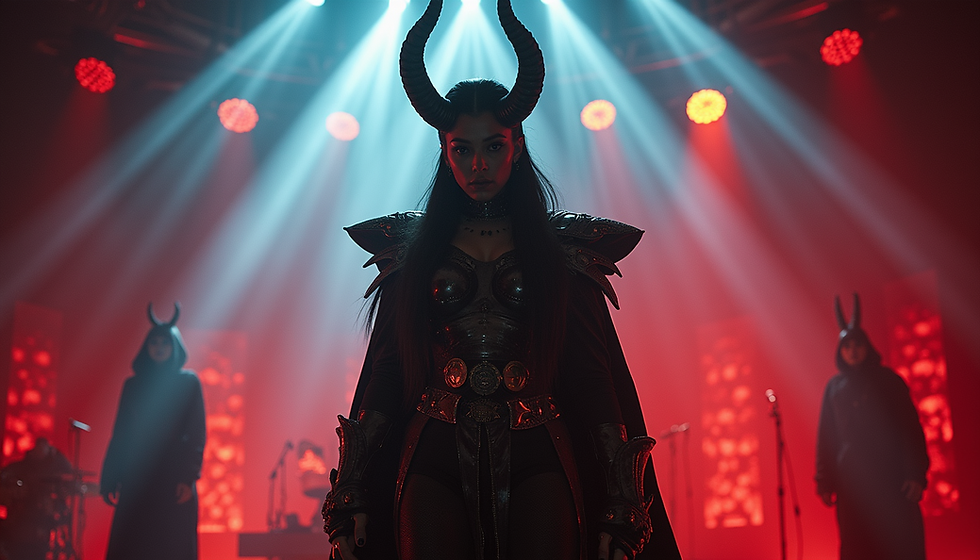The Timeless Journey of D.C. Comics' Justice League Across the Decades
- Joseph Fanning
- Oct 4
- 4 min read
The Justice League, one of the most iconic superhero teams in comic book history, has undergone significant transformations since its inception. From its humble beginnings in the 1960s to its current status as a cultural phenomenon, the Justice League has captivated audiences with its diverse roster of heroes and epic storylines. This blog post will explore the evolution of the Justice League, highlighting key moments, character developments, and the impact of various adaptations over the years.
The Birth of the Justice League
The Justice League made its debut in "The Brave and the Bold" #28 in 1960, created by writer Gardner Fox and artist Mike Sekowsky. The original lineup included Superman, Batman, Wonder Woman, Green Lantern, The Flash, Aquaman, and Martian Manhunter. This team was formed to combat a powerful alien threat, showcasing the idea that together, these heroes could achieve what they could not alone.
The concept of a superhero team was not new, but the Justice League brought together some of the most beloved characters in comic book history. This collaboration allowed for unique storytelling opportunities, as heroes with different powers and personalities interacted and faced challenges together.
The Silver Age and Beyond
During the Silver Age of Comics, the Justice League gained popularity, leading to the creation of their own series in 1961. This era was marked by colorful artwork, imaginative storylines, and a focus on teamwork. The Justice League became a symbol of hope and unity, appealing to a wide audience.
As the years progressed, the team saw various changes in its lineup. New members like Green Arrow, Black Canary, and Hawkman joined the ranks, adding depth and diversity to the group. The introduction of these characters allowed for fresh dynamics and story arcs, keeping the series engaging for readers.
The Dark Age of Comics
The 1980s brought about a shift in the comic book industry, often referred to as the "Dark Age." This period was characterized by more mature themes and complex storytelling. The Justice League was not immune to this change, as writers began to explore darker narratives and moral dilemmas.
One of the most significant events during this time was the "Crisis on Infinite Earths" storyline, which redefined the DC Universe. This crossover event led to the restructuring of the Justice League, resulting in the formation of the Justice League International (JLI) in 1987. The JLI introduced a more humorous tone, with characters like Booster Gold and Blue Beetle bringing levity to the team.
The Modern Era: New 52 and Rebirth
In 2011, DC Comics launched the "New 52," a major initiative that rebooted its entire line of comics. The Justice League was one of the flagship titles, with writer Geoff Johns and artist Jim Lee at the helm. This new iteration of the team reintroduced classic characters while also incorporating newer heroes like Cyborg.
The "New 52" Justice League focused on the origins of the team, showcasing how these heroes came together to face a common threat. This fresh take attracted a new generation of readers and revitalized interest in the franchise.
In 2016, DC Comics initiated the "Rebirth" initiative, which aimed to restore the legacy and character depth that had been lost during the "New 52." The Justice League was once again reimagined, with a focus on the relationships between the characters and their individual struggles. This era emphasized the importance of teamwork and friendship, reminding readers of the core values that the Justice League represents.
The Justice League in Other Media
The influence of the Justice League extends beyond comic books. The team has been adapted into various forms of media, including animated series, films, and video games. The 2001 animated series "Justice League" and its sequel "Justice League Unlimited" were particularly well-received, introducing the characters to a broader audience and exploring their dynamics in depth.
In recent years, the live-action adaptations of the Justice League have garnered significant attention. The 2017 film "Justice League," directed by Zack Snyder, aimed to bring the team to the big screen, although it received mixed reviews. However, the release of the "Zack Snyder's Justice League" in 2021 provided a more comprehensive vision of the story, showcasing the potential of the characters and their relationships.
The Future of the Justice League
As the comic book landscape continues to evolve, the Justice League remains a cornerstone of the D.C. Comics universe. With new storylines, character developments, and adaptations on the horizon, the future looks bright for this iconic team. The Justice League's ability to adapt and resonate with audiences ensures its place in popular culture for years to come.
The ongoing exploration of themes such as teamwork, sacrifice, and heroism will continue to captivate readers and viewers alike. As new generations discover the Justice League, the legacy of these heroes will undoubtedly endure, inspiring future storytellers to create new adventures for the world's greatest superheroes.
Conclusion
The evolution of D.C. Comics' Justice League is a testament to the enduring appeal of superhero narratives. From its origins in the 1960s to its modern adaptations, the Justice League has adapted to the changing landscape of comic books and popular culture. With a rich history and a promising future, the Justice League will continue to inspire and entertain fans around the world.
As we look back on the journey of these iconic characters, it is clear that the Justice League represents more than just a team of superheroes; it embodies the ideals of unity, courage, and hope. Whether in the pages of comic books or on the big screen, the Justice League will always hold a special place in the hearts of fans.











Comments